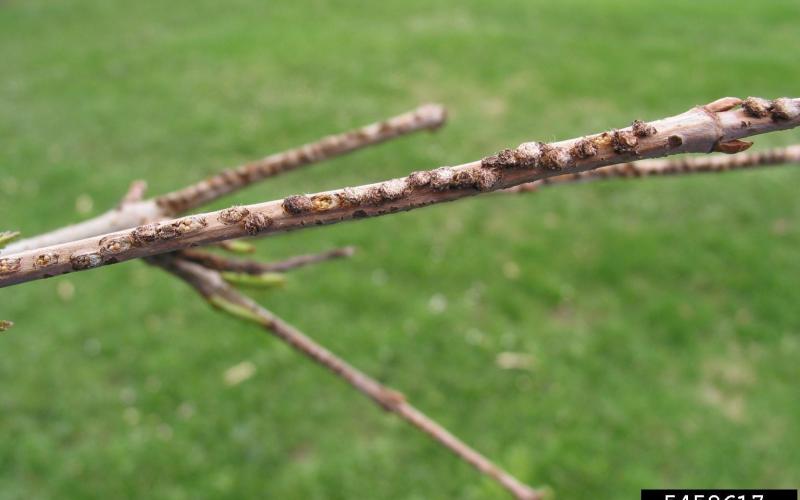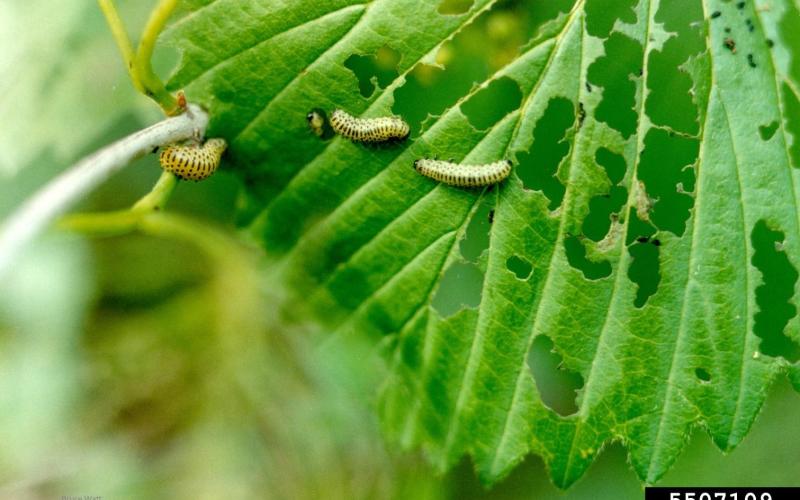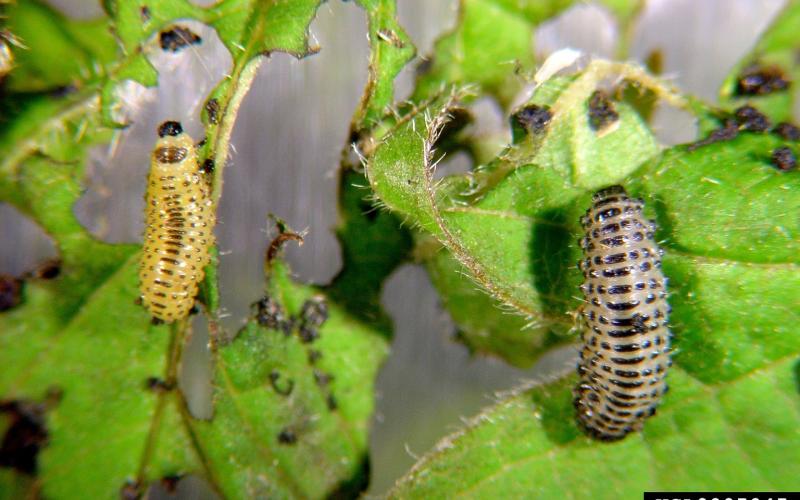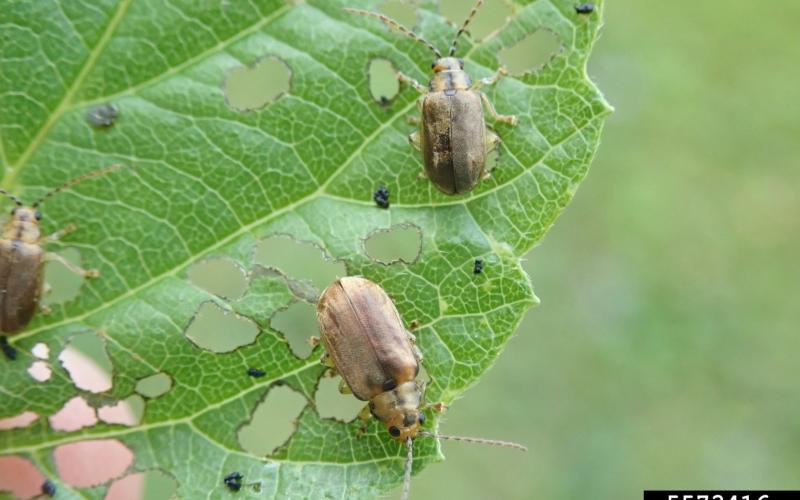Scientific name: Pyrrhalta viburni (Paykull)
Native range: Europe and Asia
At Risk
Viburnum leaf beetles (VLB) feed only on Viburnum species. Four Viburnum species are native to Minnesota: V. edule (squashberry), V. lentago (nannyberry), V. rafinesquianum (downy arrowwood), V. trilobum (American highbush cranberry). One species, V. opulus (European highbush cranberry), is considered naturalized.
Many additional Viburnum species are part of the horticultural trade and are present in landscaping throughout Minnesota. Viburnum species vary in their susceptibility to VLB, possibly due to differences in leaf shape and chemistry. Sunlight exposure may also affect susceptibility of individual plants to VLB with plants in shady locations being more susceptible than plants in sunny locations.
A partial list of Viburnum species along with susceptibility ratings is available at the VLB Citizen Science Website.
History
The viburnum leaf beetle is native to Eurasia and appears to have established itself in North America (Ottawa and Quebec) during the 1970s. It was first discovered in the United States in Maine in 1994. By 2007, it was considered established as far west as Ohio, as well as in British Columbia and Washington State. In 2009, VLB was discovered in Dane County, Wisconsin and Cook County, Illinois. In 2019, VLB was discovered in Hennepin County, Minnesota.
Biology
Adult viburnum leaf beetles appear in midsummer and feed on Viburnum leaves. After mating, females chew small pits into twigs and deposit their eggs, covering them with bits of chewed wood. A single female can produce up to 500 eggs.
The eggs overwinter and hatch into larvae in the spring. Like adults, the larvae feed on Viburnum leaves. Early defoliation is subtle, with small larvae scraping the outer surface of leaf tissue on the undersides of leaves. As larvae grow, defoliation becomes more noticeable, often leaving a "skeletonized" appearance where only leaf veins remain.
Larvae pupate in the soil before emerging as adults in June or July. Adult beetles create holes in Viburnum leaves that may cross leaf veins. One generation occurs per year.
Identification
Identifying viburnum leaf beetles can be challenging because the larvae and adults resemble other leaf beetles. However, skeletonized foliage on Viburnum is a strong indicator of the presence of VLB.
No native insects in Minnesota are known to skeletonize Viburnum leaves. However, the invasive Japanese beetle (Popilla japonica) may skeletonize Viburnum as adults. If skeletonizing damage is seen on Viburnum leaves, look for the presence of larvae on or under leaves or for egg pits on twigs – particularly new growth. If either is present, the insect is likely VLB.
Selected References
- Majka CG, LeSave L. 2007. Introduced Leaf Beetles of the Maritime Provinces, 3: The Viburnum Leaf Beetle, Pyrrhalta viburni (Paykull) (Coleoptera: Chrysomelidae). Proceedings of the Entomological Society of Washington. 102(2): 454-462.
- Smith, WR. 2008. Trees and Shrubs of Minnesota. University of Minnesota Press.
- Viburnum Leaf Beetle Citizen Science Website. Cornell University 2010.
- Weston PA, Desurmont G, Hoebeke ER. 2007. Viburnum Leaf Beetle (Coleoptera: Chrysomelidae). Biology, Invasion History in North America and Management Options. American Entomologist. 53(2): 96-101.
What Can I Do?
Contact the MDA via Report a Pest if you suspect you have found viburnum leaf beetle.
Smarty Plants Podcast
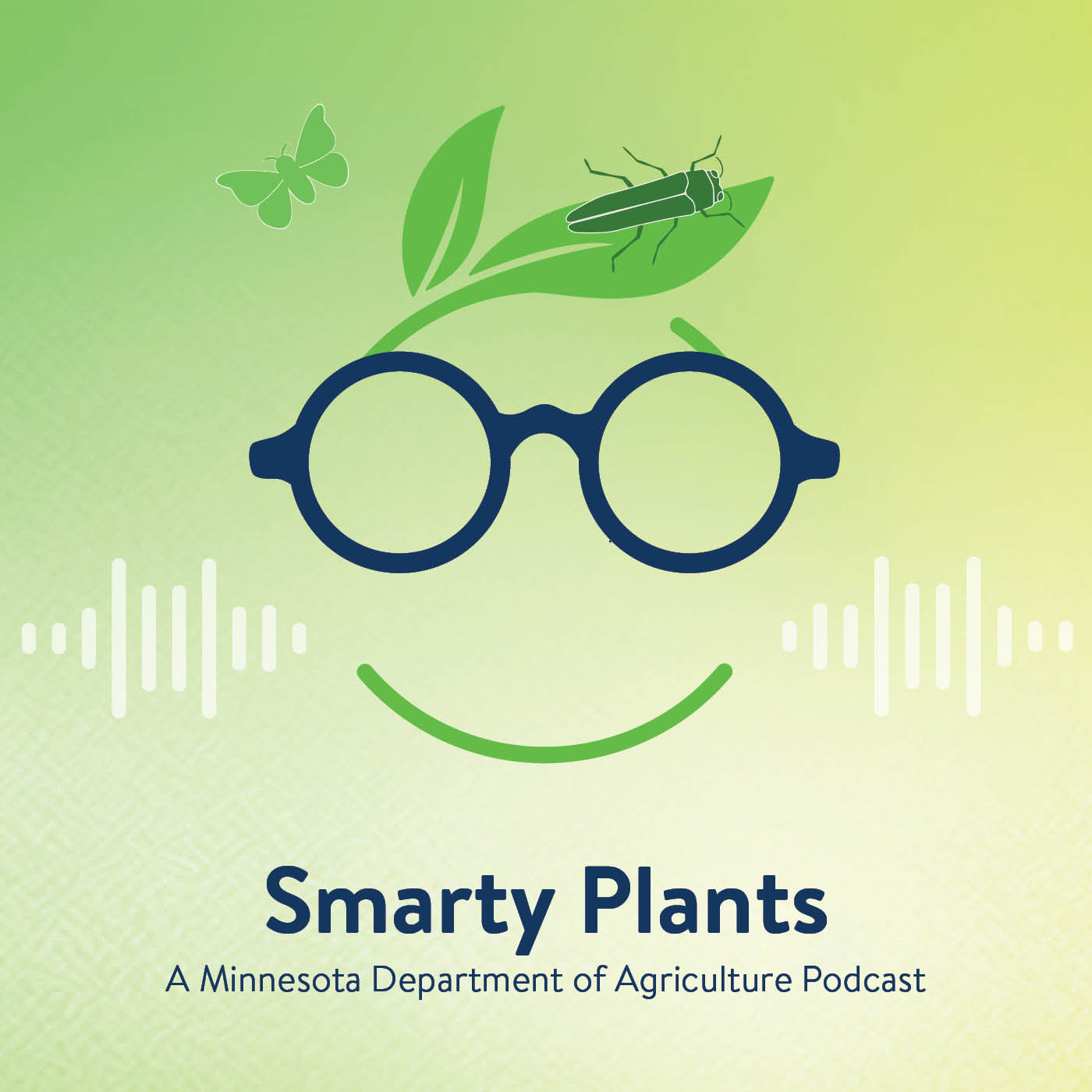
Discover Smarty Plants, the Minnesota Department of Agriculture's podcast that digs into the fascinating world of invasive species. Join expert guests as they share insights and solutions to protect our environment and agricultural resources. Visit Smarty Plants and start listening today.
